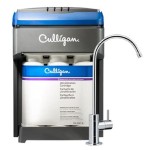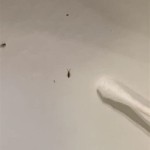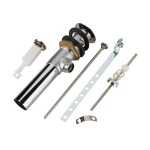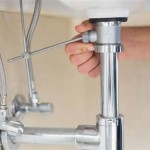How to Hook a Water Hose to a Sink
Connecting a water hose to a sink is a straightforward process that allows for convenient access to water for various outdoor tasks like gardening, car washing, or filling buckets. While seemingly simple, the process might involve a few steps depending on the type of sink and faucet you have. This guide will outline the steps involved in connecting a water hose to a sink, focusing on the different scenarios you might encounter.
Choosing the Right Hose Adapter
The most crucial step in connecting a water hose to a sink is selecting the appropriate adapter. This adapter serves as a bridge between the faucet's outlet and the hose's inlet. The type of adapter needed depends on the specific configuration of the faucet and the hose. Here's a breakdown of common adapter types:
- Faucet-Specific Adapters: Some faucets are designed with built-in hose connectors. These adapters are usually threaded and require a specific size (typically 1/2-inch or 3/4-inch) that matches the hose's threading.
- Universal Adapters: These adapters are designed to fit various faucet configurations. They typically have a threaded end that screws into the faucet's outlet and a hose connector on the other end. Universal adapters often come with multiple attachments to fit various hose sizes and styles.
- Aerator Removal Adapters: Some sink faucets have an aerator attached to the spout. This aerator mixes air with water, creating a stream of water. For hose connections, the aerator needs to be removed. This is where an aerator removal adapter comes into play. It connects to the faucet threads and allows you to screw the hose adapter onto the existing threads.
It's important to note that some faucets are not designed for hose connections. For these faucets, using a hose adapter with a built-in valve is recommended to prevent continuous water flow when the hose is not connected or in use.
Connecting the Hose Adapter
Once the appropriate adapter is chosen, the next step is connecting it to the faucet. Here are the general steps:
- Turn off the water supply: Locate the water supply valve for the sink and turn it off completely to prevent water from spraying while connecting the adapter. This is usually a lever handle or a knob located under the sink or behind it.
- Remove the aerator (if necessary): If the faucet has an aerator, unscrew it using pliers or a wrench. This will expose the threads for attaching the adapter.
- Screw the adapter onto the faucet: Thread the adapter onto the faucet's outlet, ensuring it is securely fastened. If using a universal adapter with multiple attachments, choose the attachment that fits the faucet's outlet and screw it on tightly.
- Attach the hose to the adapter: Connect the hose to the other end of the adapter. If the adapter has a built-in valve, ensure it is turned off.
- Turn on the water supply: Slowly turn the water supply valve back on and check for any leaks at the connection points. If leaks are present, retighten the connections or replace the adapter.
It's essential to use caution while working with water and plumbing fixtures. Avoid applying excessive force when tightening the connections, as this can damage the faucet or adapter.
Troubleshooting and Maintenance
Even after successfully connecting the hose, there might be instances of issues or leaks. Here are some troubleshooting tips:
- Check for leaks: If leaks occur at the connection points, retighten the adapters and ensure they are securely fastened to both the faucet and the hose. If the leak persists, inspect the adapters for any damage or wear and tear. Replace the adapters if necessary.
- Check the hose connections: If the hose itself is leaking, inspect the hose connections for any looseness or damage. Tighten the connections or replace the hose if needed.
- Ensure the valve is closed: If the adapter has a built-in valve, ensure it is fully closed when the hose is not in use. A partially closed valve can lead to drips and leaks.
- Regularly inspect the adapter and hose: Over time, adapters and hoses can experience wear and tear, leading to leaks or damage. Regularly check the adapters and hoses for any cracks, tears, or loose connections. Replace them as needed to ensure safe and reliable water flow.
By following these simple guidelines and taking proper care of the adapter and hose, you can ensure a reliable and convenient water supply for your outdoor needs.

Easy How To Hook Connect A Hose Faucet Sink Yourself Youtube

How To Attach A Garden Hose Kitchen Faucet Easy Diy

How To Hook A Garden Hose Your Indoor Faucet De Ice Deck Thaw Containers Raised Beds Early

How To Use Garden Hose With Indoor Faucet Youtube

How To Hook A Garden Hose Up Sink Faucet Claber Youtube

How To Connect Faucets With Supply Tubes The Home

Connect A Hose To Any Tap Summer Life Bunch O Balloons

How To Connect Faucets With Supply Tubes The Home

How To Fix A Sink Sprayer Leaking In The Kitchen Full Guide

How To Connect Faucets With Supply Tubes The Home







